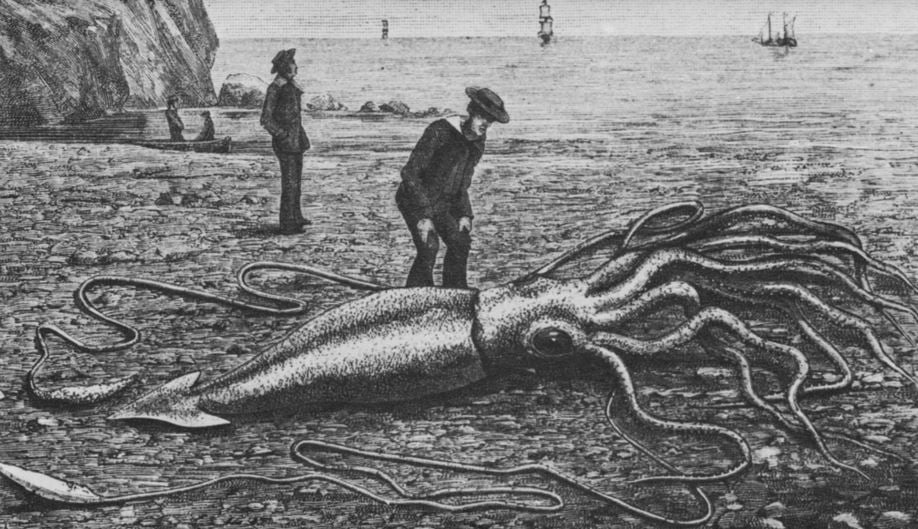A giant squid put on a spectacular show on Christmas Eve for a group of amazed Japanese spectators. The four-metre-long giant squid (genus Architeuthis) is a rarely-seen deep-ocean dwelling squid in the family Architeuthidae.
The one seen by the group of Japanese spectators was not very big, as far as the giant squid world is concerned. Females can reach a length of 13 metres (43 feet) and males 10 metres (33 feet), from the back fins to the tip of the two long tentacles. They can weigh up to one ton.
The delighted spectators were on the pier at Toyama Bay, located on the northern shores of Honshu, Japan, when the gigantic orange and white squid was filmed swimming close by.
 Christopher Mah, a Marine biologist posted this picture of the giant squid on Twitter. He is not sure whether it is Architeuthis. (Image: twitter.com/echinoblog)
Christopher Mah, a Marine biologist posted this picture of the giant squid on Twitter. He is not sure whether it is Architeuthis. (Image: twitter.com/echinoblog)
Toyama Bay is famous for its incredible firefly squid (Watasenia scintillans), also called the sparkling enope squid, which gather in the region to spawn, and glow an iridescent blue. This giant squid, however, apart from being a completely different type of animal, is hardly ever seen alive by humans.
The only times humans ever get a chance to see these deep-ocean dwellers with the naked eye are either when they are found dead floating on the surface or washed up on beaches.
A reporter for NHK NewsWeb in Japan, who was on the Toyama Bay pier at 7am on Christmas Eve, said he saw the giant squid swimming between the large ships nearby.
Giant squid grabbed an angler’s arm
NHK NewsWeb quoted an angler, Kimura Nobuaki, as saying:
“It had strong suckers, and I felt pain when it stuck to me. While I was trying to let it escape from the harbor, it twined around my body and clung to my arms.”
Giant squid tend to come to the surface only when they are either ill or unhappy. Toyama authorities announced that they have no plans to capture it, saying it should be left alone to swim away.
 An artist’s impression of a giant squid washed up on the beach in Trinity Bay, Newfoundland, in 1877. (Image: Wikipedia)
An artist’s impression of a giant squid washed up on the beach in Trinity Bay, Newfoundland, in 1877. (Image: Wikipedia)
Folklore is full of stories about giant squid monsters pulling down boats and eating people. The Kraken, a legendary sea monster that was said to live off the coasts of Greenland and Norway, was probably a story triggered by sightings of giant squid.
According to recent studies, giant squid feed on other squid species and deep-sea fish. They grab their prey using two tentacles, holding on to it with serrated sucker rings on the ends. It then pulls in its catch toward its powerful beak and shreds it with its radula – a tongue full of small, file-like teeth. Zoologists believe they are solitary hunters.
They have very few predators to fear. Sperm whales eat them, and occasionally pilot whales too. Smaller juveniles are sometimes hunted by deep-sea sharks.
When scientists want to observe giant squids, they follow sperm whales, because they are skilled at locating them.
Video – Giant squid seen off coast of Japan
